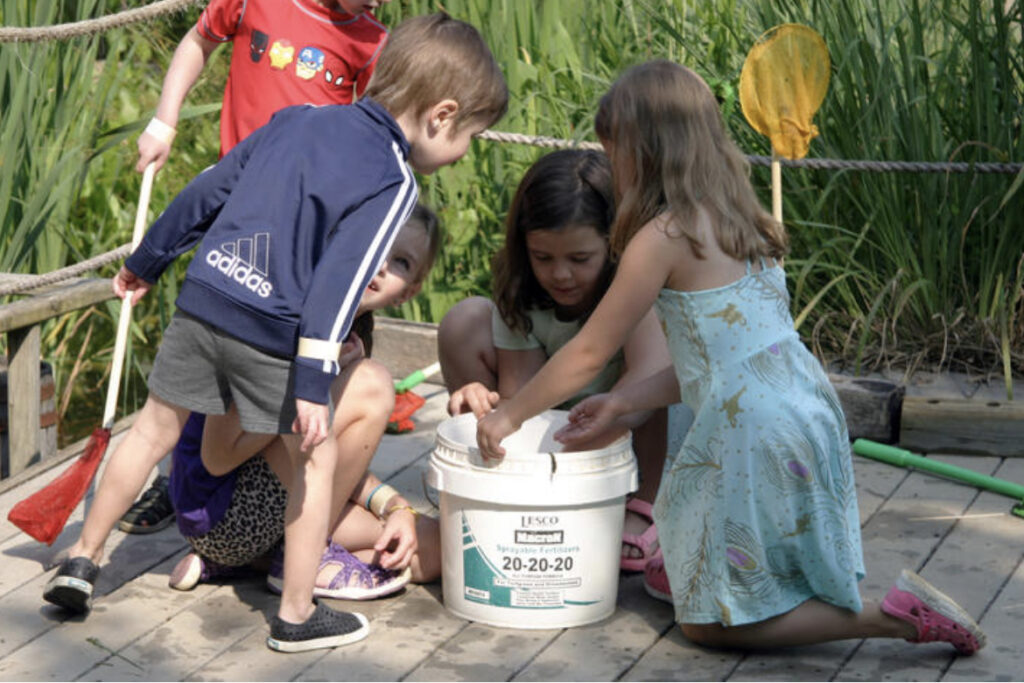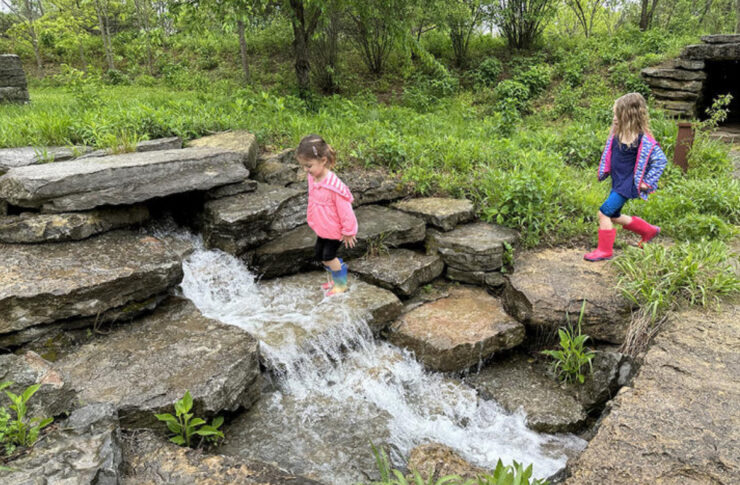Audrey Wathen scampers between the yarn-covered “wishing tree” and the spot where giddy toddlers gleefully make billowing bubbles in large orange vats. She’s trailed closely by her younger sister, Eleanor, and her best friend, Ransom Corso. A distinctive squish-squish sound follows them as they run, their rubber shoes still soggy from wading in the nearby stream. They make their way to a scuffed white plastic pail that contains fat, slippery tadpoles. Audrey gamely plunges her hands into the bucket, gently holds the developing amphibian and discovers that it will take at least two years for it to transform into an American bullfrog. She looks up, incredulous.
It’s Audrey’s eighth birthday, and, according to her mother, Alison Wathen, the Kentucky Children’s Garden at The Arboretum, State Botanical Garden of Kentucky, topped her list of destinations where to celebrate.
Audrey and her friends are not unlike the other 15,000 children who visited the Kentucky Children’s Garden in 2022 — preadolescents who come to enjoy the great outdoors through experimental play. The two-acre garden is situated amidst The Arboretum’s verdant beauty and is more than just a place to play; it’s a haven of learning, creativity and boundless imagination that showcases the wonder of nature.
“In the modern world, children often have limited exposure to nature, face nutritional challenges and spend excessive time engaged with screens,” said Hannah E. Wells, program coordinator at The Arboretum. “We aim to address these issues by offering a unique environment where children can learn through firsthand experiences while having a great time.”

As Audrey and her friends continue to marvel at the bullfrog lifecycle, a father and his two sons look on. The father grimaces at the sight of the tar-hued tadpole. A staff member breaks his gaze by asking if he would like to touch it. He reluctantly acquiesces, offering up his index finger.
“It feels like … like …” — the father struggles for a simile with which to compare — “… like Jell-O!” he exclaims, recoiling and covertly attempting to wipe the digit on his crisply pressed chino shorts.




























